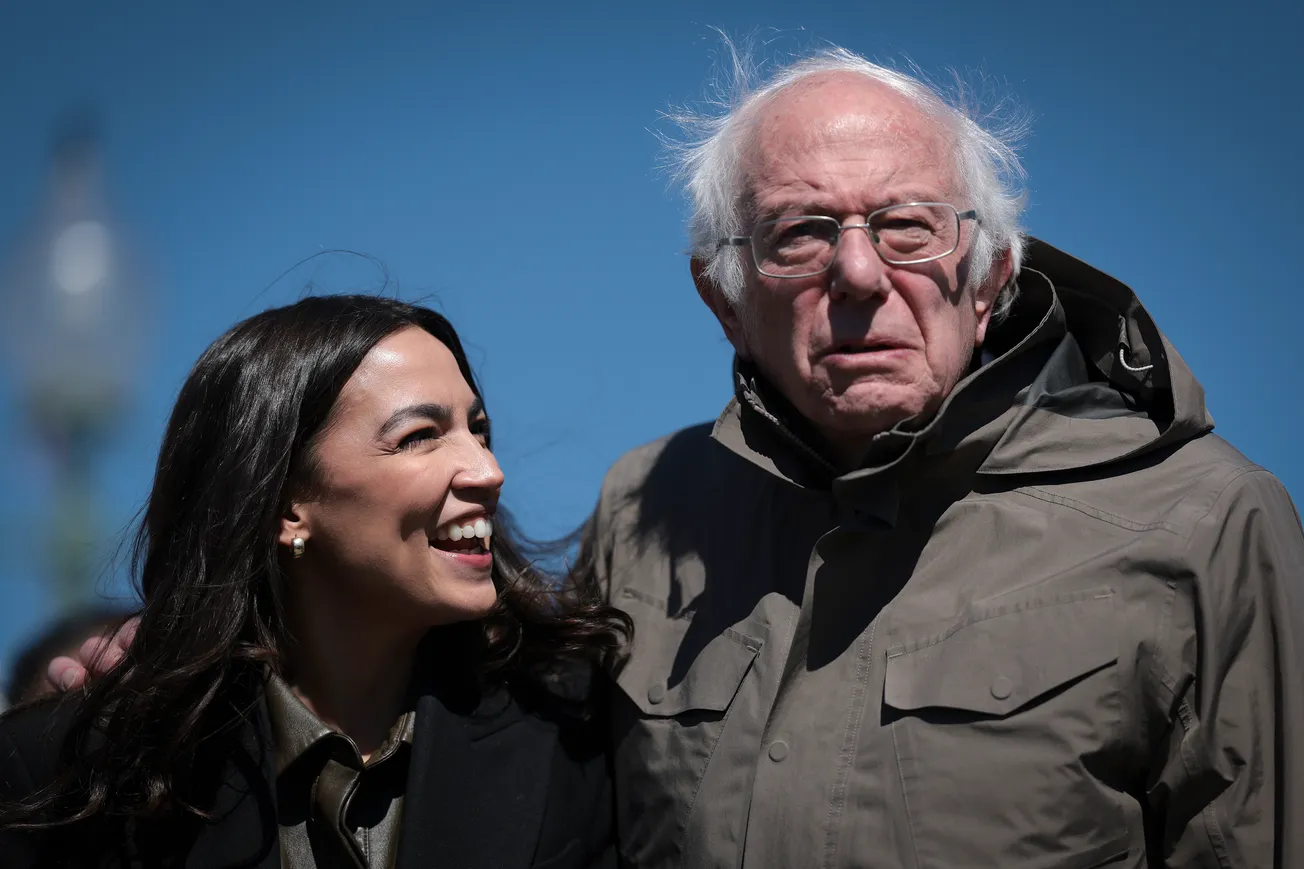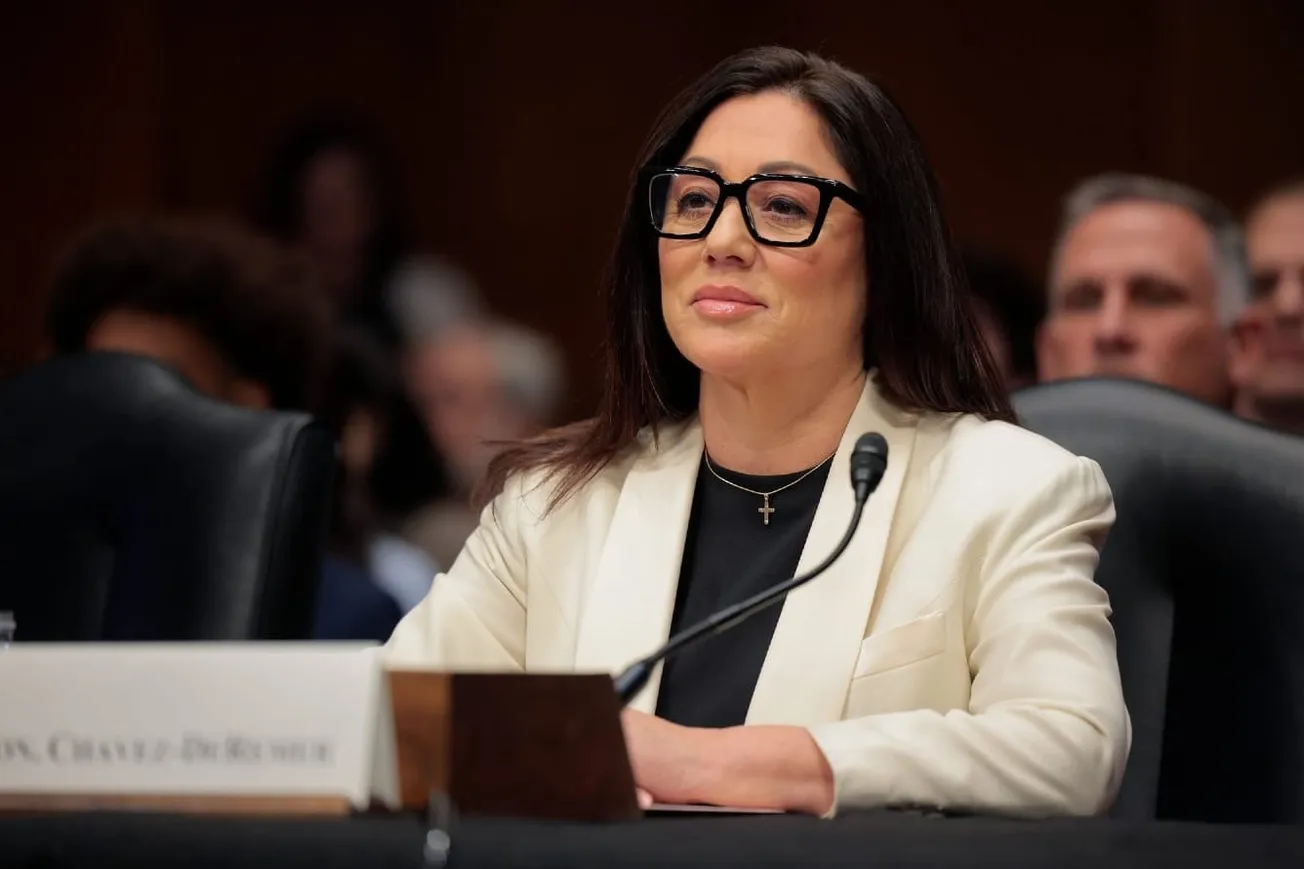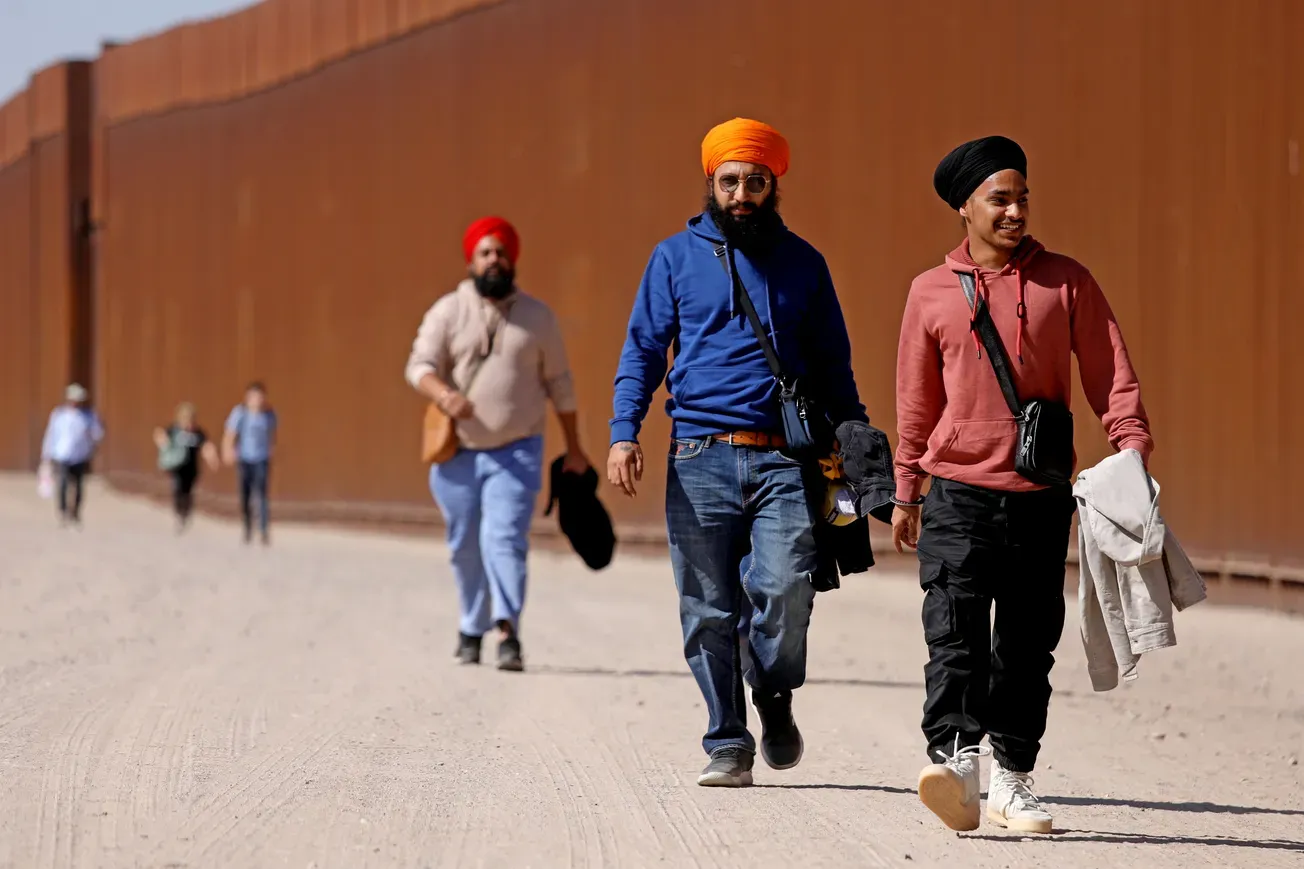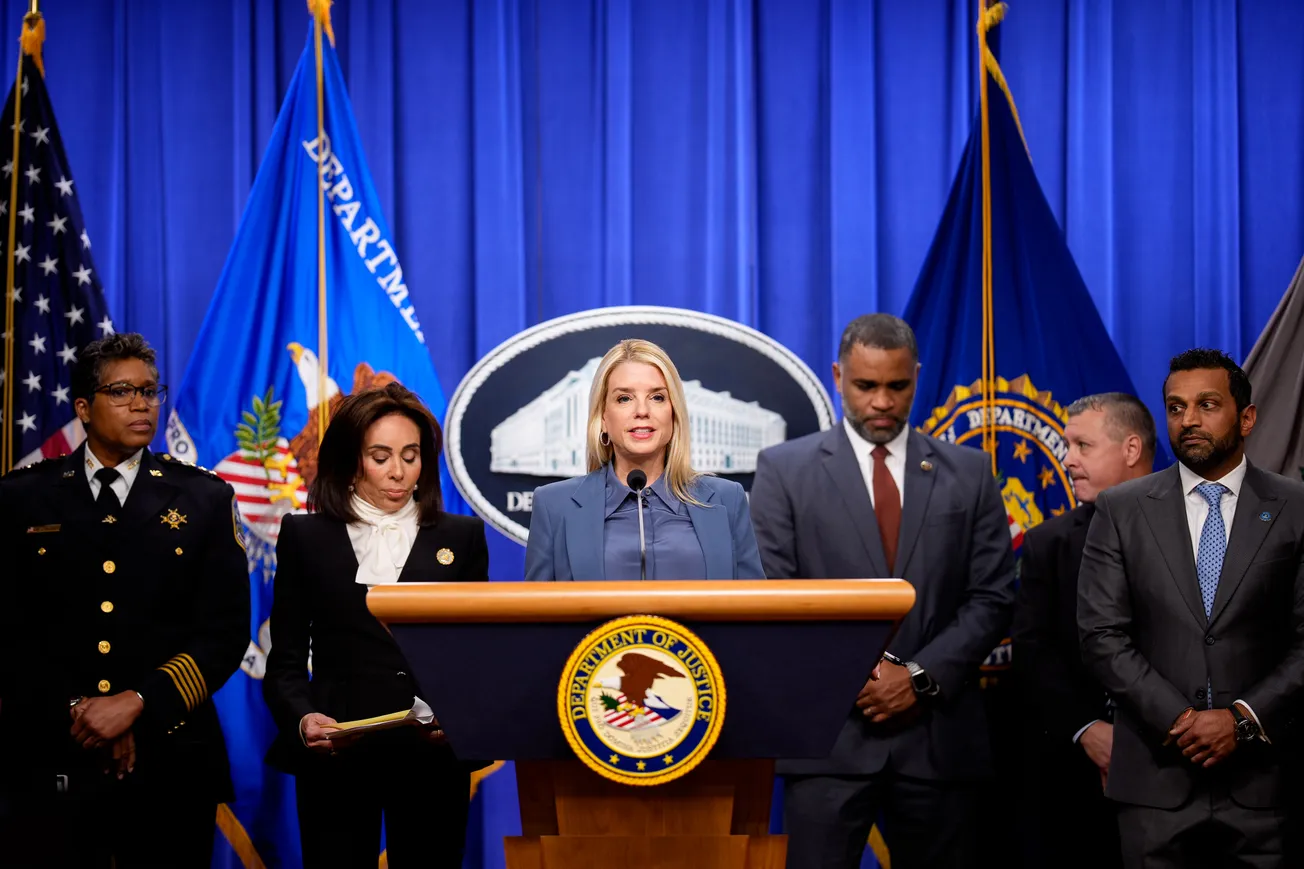The Democrats don't ever learn.
In the last week, while the rest of the Capitol Hill caucus of House and Senate liberals sported a deer-in-the-headlights look, who did we have drawing record crowds in Arizona and Colorado? Vermont Independent Senator Bernie Sanders and New York Representative Alexandria Ocasio-Cortez (AOC).
Sanders knows that his progressive pitches—Medicare for All, a Green New Deal, and economic and racial justice—attract millions of liberal Democratic and Independent voters. This is why he thrives on Leftist TV outlets like MSNBC and CNN. But the truth is that he is still a leader of a fringe movement, and his policies are anathema to a majority of Americans. While he is liked as a person, the defining metrics are not his popularity but how voters believe the country would fare under a Sanders-style presidency.
We're not hinting that Sanders would run again in 2028. He is 83 years old today, and although he is extraordinarily fit and has bucketloads of energy not seen in politicians twenty years younger, America wouldn't want someone who turned 87 to be inaugurated as our 48th president. Indeed, his public appearances with AOC were designed to communicate that the movement is alive. While Sanders may not be its messenger anymore, progressives like AOC will be capable leaders in the coming decades.
AOC has shown astute political skills by aligning with those who can propel her career forward. To AOC, there can be no better ally than Sanders, given how successfully he has run campaigns in Democratic primaries. Should AOC run in 2028, she will likely follow Sanders's copybook and actively seek his endorsement and get it.
Sanders had a strong showing in the 2020 Democratic primaries, though he ultimately did not secure the nomination. He started as a frontrunner, winning the popular vote in the first three contests: Iowa (narrowly, though the delegate count was disputed due to caucus chaos), New Hampshire (by about 4,000 votes over Pete Buttigieg), and Nevada (with a commanding 46.8% of the vote, nearly double Joe Biden's share). By early March 2020, after Super Tuesday on March 3, Sanders had racked up 573 pledged delegates and was leading in states like California, Utah, and Vermont, positioning him as a serious contender.
However, Democrat leaders knew that Sanders would take them over a cliff. The Trump economy was roaring, and COVID-19 was not yet a factor in the 2020 race. Out of sheer desperation, Democrats cut backroom deals with James Clyburn, the kingmaker of the South Carolina Democrats’ congregation, and anointed Joe Biden as their party's future leader.
Biden swept key states like South Carolina (with 48.6% to Sanders's 19.8%), Michigan, and Missouri, bolstered by endorsements from former rivals like Buttigieg and Amy Klobuchar. Sanders's campaign struggled with turnout among his base—particularly younger voters—and faced a unified moderate bloc that outpaced his progressive coalition. By April 8, 2020, with 689 delegates to Biden's 1,217, Sanders suspended his campaign, acknowledging Biden's insurmountable lead. He ended with 1,119 pledged delegates total, compared to Biden's 2,687, finishing second in a race that had started with over 20 candidates.
The Bernie Sanders story of always being the bridesmaid but never the bride started in 2016. That campaign was a remarkable insurgency within the Democratic primaries, transforming him from a relatively obscure Vermont senator into a national figure and nearly toppling the presumed frontrunner, Hillary Clinton. The Sanders platform centered on economic inequality, universal healthcare, free college tuition, and reducing the influence of big money in politics—ideas that gained traction as the race unfolded.
Sanders leaned heavily on grassroots energy, small-dollar donations (averaging $27 per contribution), and massive rallies—often drawing tens of thousands, dwarfing Clinton's events. By January 2016, he had closed the gap significantly, trailing Clinton by single digits in Iowa and leading in New Hampshire. His first breakthrough came in the Iowa caucuses, where Sanders tied Clinton at 49.6% to her 49.9%—a virtual dead heat, with Clinton edging out 700.57 state delegate equivalents to Sanders's 696.92. He then won New Hampshire decisively on February 9, 49.6% to Clinton's 38%, picking up 15 delegates to her 9.
Sanders fell victim to delegate math. The 2016 primaries hinged on pledged delegates (earned through primaries and caucuses) and superdelegates (party insiders free to support any candidate). To clinch the nomination, a candidate needed 2,383 total delegates out of 4,051 pledged and 712 superdelegates. Sanders's strategy relied on dominating pledged delegates, but Clinton's early lock on superdelegates—hundreds pledged to her before voting even began—tilted the scales. When the Democratic National Convention rolled around in July 2016, the final tally was Clinton's 2,807 (pledged + superdelegates) to Sanders's 1,894—meaning he fell 489 delegates short of the nomination.
And herein lies Sanders's impressive political record. In two consecutive campaigns in 2016 and 2020, he came in a close second.
After America returned President Trump to the White House, liberal media outlets are hoping to find a crack in Trump's popularity but are distressed that they have not found one. Two days ago, CNN's chief data analyst, Harry Enten, had a discussion with Sara Sidner about Americans' belief that the country is on the right track under President Trump.
ENTEN: So, let's take a look at the percentage of the country that says that we're on the right track. It's actually a very high percentage when you compare it to some historical numbers. What are we talking about? According to Marist, forty-five percent say that we're on the right track. That's the second highest that Marist has measured since 2009. How about NBC News? 44 percent. That's the highest since 2004. The bottom line is the percentage of Americans who say we're on the right track is through the roof.
The latest TIPP polling shows that most Americans, especially Republicans and independents, are feeling better about the country’s direction. As optimism rises under Trump, the Sanders-AOC vision looks more out of touch than ever. The charts below tell the story.
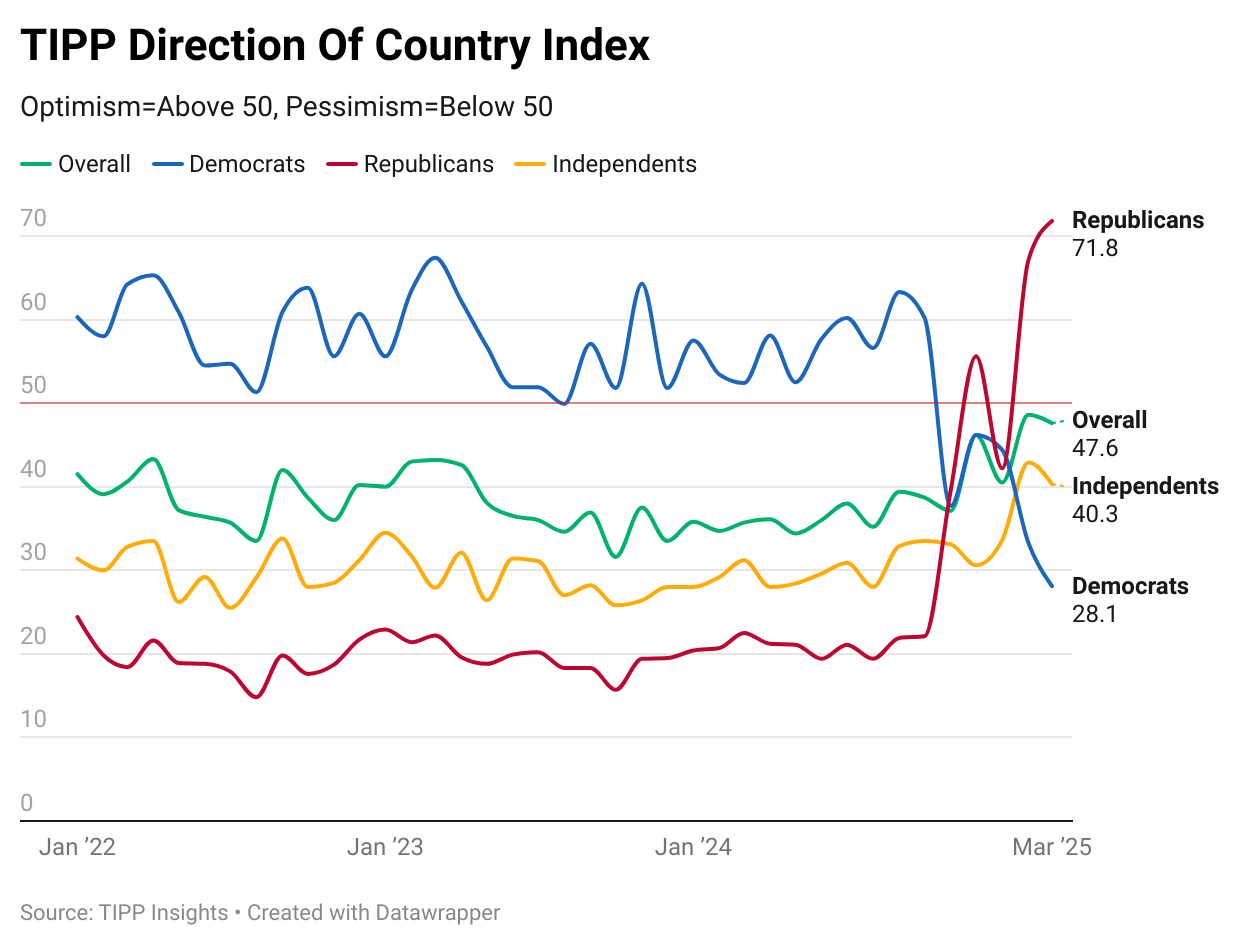
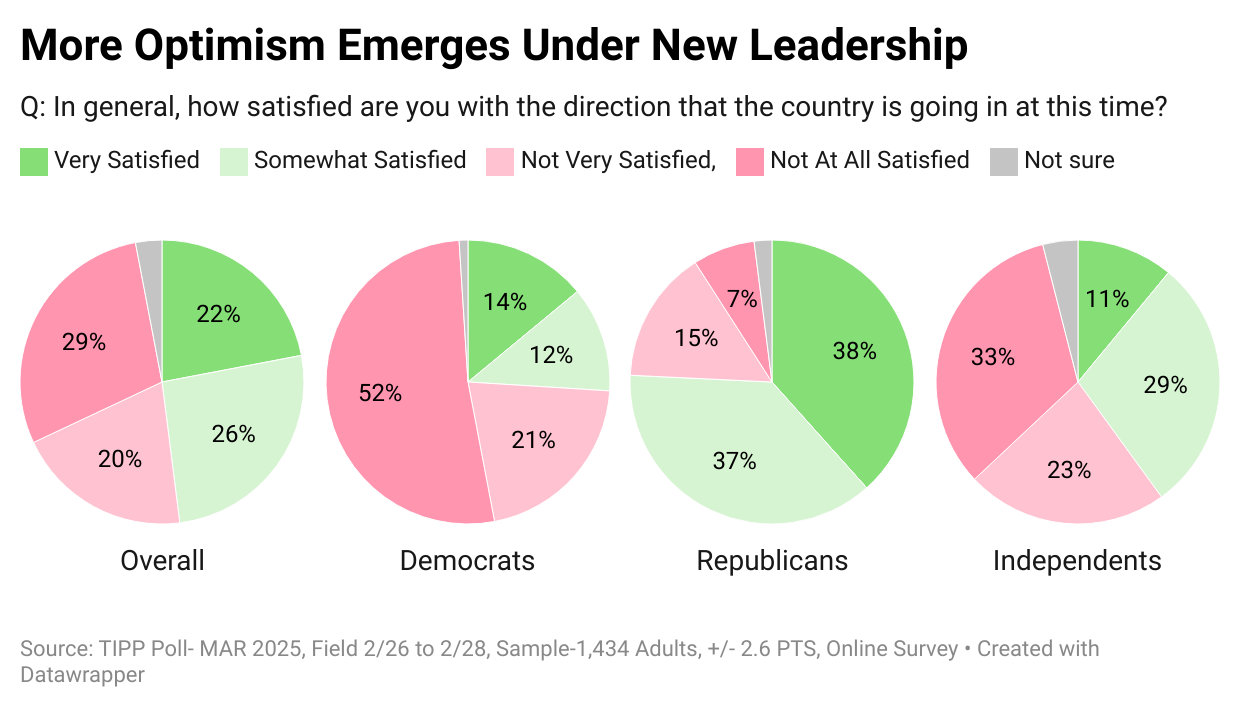
So, Americans support Trump's policies, not Sanders's vision, a significant version of which was deployed under the Biden administration to disastrous results. AOC, as the new messenger, may be a fresh and young face. However, the message is still the same, and it is not what Americans want.
TIPP Picks
Selected articles from tippinsights.com and more
Trump 2.0
1. ‘Waste of Money’: Trump Calls For Defunding NPR, PBS Ahead Of House DOGE Hearing—Fred Lucas, The Daily Signal
2. Abraham Lincoln Charted A Course For Trump On Judicial Overreach, Josh Hammer Says—Tyler O'Neil, The Daily Signal
3. Trump Orders Declassification Of Crossfire Hurricane Files—TIPP Staff, TIPP Insights
4. Trump May Freeze Millions In Funding For Planned Parenthood, Report Says—Elizabeth Troutman Mitchell, The Daily Signal
5. Trump Issues Executive Order Prioritizing Fair, Honest Elections—Elizabeth Troutman Mitchell, The Daily Signal
6. Trump Pardons Ex-Hunter Biden Business Partner Devon Archer—Reagan Reese, DCNF
7. Trump Wants To 'Fix' Elections—TIPP Staff, TIPP Insights
8. One Gov’t Agency Still Spending $1,000,000,000 On DEI Despite Trump’s Order To Cut It Out—Thomas English, DCNF
9. Trump Continues To Trust His National Security Team: White House—TIPP Staff, TIPP Insights
World Affairs
10. Trump And Putin Begin Addressing Cumulated Geo-Strategic Debris… Amidst Trump’s Ultimatum To Iran—Alastair Crooke, The Ron Paul Institute for Peace and Prosperity
11. JD Vance-Led Deal Aims to Save TikTok From April 5 Ban—TIPP Staff, TIPP Insights
12. J.D. Vance Joins Wife on Greenland Trip—TIPP Staff, TIPP Insights
13. Kari Lake Vows To Slash US Agency For Global Media Budget—R.E. Wermus, The Daily Signal
Politics
14. Senate Panel Clashes Over Censorship, Free Speech—George Caldwell, The Daily Signal
15. Democrats Maintain Control in Pennsylvania Special Elections—TIPP Staff, TIPP Insights
16. Democrat Rep Draws Rebukes For Mocking Texas Governor’s Disability—Moira Gleason, The Daily Signal
17. Tulsi Gabbard Calls Signal Chat Incident a "Mistake," Denies Classified Info Leak—TIPP Staff, TIPP Insights
18. Linda McMahon Says She Was ‘Fully Aware’ Her Admin Job Would Be To Eliminate Her Own Position—Reagan Reese, DCNF
Economy
19. The Rise Of The State And The End Of Private Money—Ryan McMaken, Mises Wire
20. What Trump’s Tariff Critics Are Getting Wrong—Lori Wallach, Project Syndicate
21. Markets Need More Than Rate Cuts To Recover—Daniel Lacalle, Mises Wire
General Affairs
22. The Left’s Tesla Terrorism Agenda—Victor Davis Hanson, The Daily Signal
23. The Great Tom Massie—Llewellyn H. Rockwell Jr., Mises Wire
24. Radicals Seek To Thwart Reform By Attacking Teslas—Jeff Reynolds, CFACT
25. Greenpeace To Appeal $660M Verdict In Pipeline Case—Jacob Adams, The Daily Signal
26. The Beltway Circus Rolls On At US Commission On Civil Rights—Hans von Spakovsky, The Daily Signal
27. Elon Musk Will Find Out Whodunnit In Group Chat Leak: White House—TIPP Staff, TIPP Insights
28. Waltz Takes Responsibility for Security Breach in Group Chat Leak—TIPP Staff, TIPP Insights

